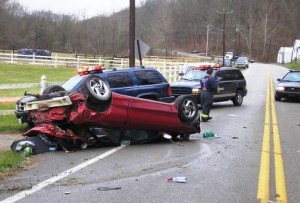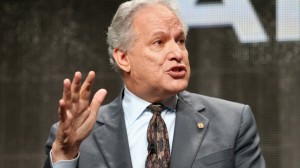Traffic deaths spiked by 8% during the first half of the year, according to a new federal report, reversing a decade-long downward trend.
Officials point to a variety of factors that may be behind the unexpected increase, including both lower fuel prices and the improving economy. That has led to more Americans driving more frequently and for longer distances. A new AAA report, for example, indicates 42 million Americans will drive at least 42 miles over the coming Thanksgiving holiday.
“These numbers are a wake-up call,” said Mark Rosekind, head of the National Highway Traffic Safety Administration.
The sharp surge comes at a time when safety-related automotive recalls have also grown rapidly. A total of 64 million vehicles were affected in 2014, double the previous record set in 2004, and the industry could set yet another all-time high this year.
But Rosekind noted that 94% of all crashes are blamed on driver error, saying that, “It is important for Americans to know that human behaviors are by far the largest cause of fatalities.”
NHTSA has put an emphasis on distracted driving, a problem linked, but not limited, to texting and calling while driving. All told, the agency has blamed the problem for 10% of the 32,675 U.S. traffic deaths last year, but Rosekind suggested it may make up an even larger total but is difficult to confirm.
U.S. highway fatalities peaked in the 1970s then fell 40% over the following four decades. But the decline had been slowing in recent years, the total drop last year just 0.1%. But it also marked a record low of just 1.07 deaths per million vehicle miles driven. That figure rose 4% during the first half of 2015.
This year has seen the reversal of a significant trend: after a decade in which Americans drove an average 25% fewer miles each year, other studies have shown motorists are beginning to clock more miles again. According to the Federal Highway Administration, U.S. drivers close 1.54 trillion miles during the first half of 2015, a 3.5% year-over-year increase.
How much of an impact that has had is not yet clear, however. One possible indication will come over the Thanksgiving weekend when an average 1,000 Americans typically die on the road. The AAA reports a total of 47 million people will travel at least 50 miles for the holiday, 300,000 more than last year. That includes 42 million who will make their trips on the road.
(Traffic accidents spike up to 34% over Thanksgiving holiday. Click Here for the story.)
Rosekind stressed that motorists can help reduce crashes, injuries and fatalities by putting down their smartphones, holding back on drinking – and drug use – while driving, and by using the most effective forms of safety gear: seatbelts and motorcycle helmets. There has been an even bigger surge in motorcycle deaths in recent years which has largely been blamed on the movement to eliminate mandatory helmet laws across the country.
NHTSA data showed that in 2014, the safest year ever, at least for those riding inside a vehicle, nearly half of the 21,022 Americans killed had failed to buckle up.
Despite the increased focus on distracted driving, and a nationwide crackdown on driving under the influence, alcohol-fueled crashes were still blamed for 9.967 deaths in 2014, a third of the overall highway fatalities.
One factor that has helped reduce the highway carnage has been the increased availability of advanced safety equipment. A study by the Insurance Institute for Highway Safety credited electronic stability control as a major breakthrough, perhaps more significant than any other device since seatbelts became mandatory in the U.S.
Federal law now requires the use of that technology in all passenger vehicles and NHTSA is studying a number of other new technologies, including connected car systems designed to alert drivers to weather, traffic and other hazards.
(10 automakers commit to making auto emergency braking standard. Click Here for the story.)
Such technology will be critical in continuing the downward trend in highway fatalities, Administrator Rosekind said during an appearance in Detroit earlier this year. There is “no way our country should tolerate (so many) people dying on our roadways,” he said.
The agency will hold meetings in five cities around the country to get public feedback on how to reduce that toll, and will follow up with safety experts to develop a plan of action. That plan will focus on ways to reduce potentially deadly driver errors.
(Global survey finds strong interest in autonomous vehicles. Click Here to see what Americans said.)



Not to worry, the Feds will throw some more money at the problem and achieve nothing. They have an excellent track record of same. You can’t fix STUPID and we have a lot of STUPID in the U.S. On average 90 people die everyday in the U.S. and realistically probably 90% of those deaths are preventable. You can’t allow DUI, cellphone calls, texting, applying make-up or other distracted driving and claim that you are seriously trying to reduce vehicular fatalities or injuries.
We have the safest cars ever in history and yet over 32,000 people die annually primarily from negligence by all involved. Throwing money at the problem fixes nothing and is totally disingenuous.